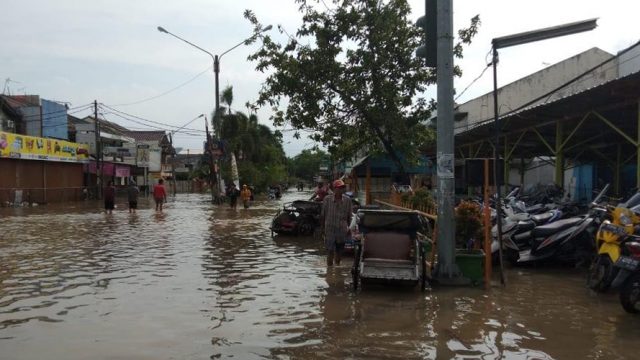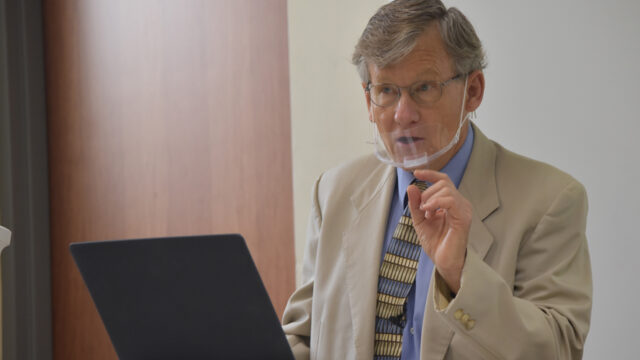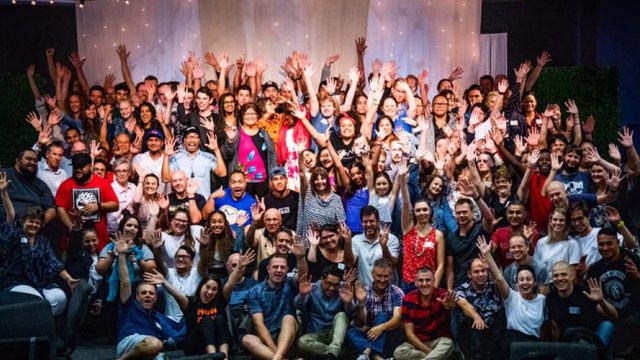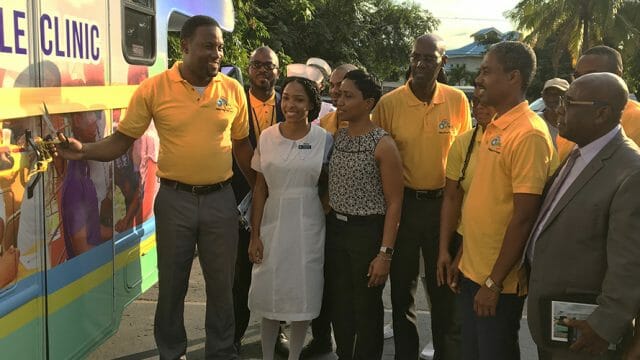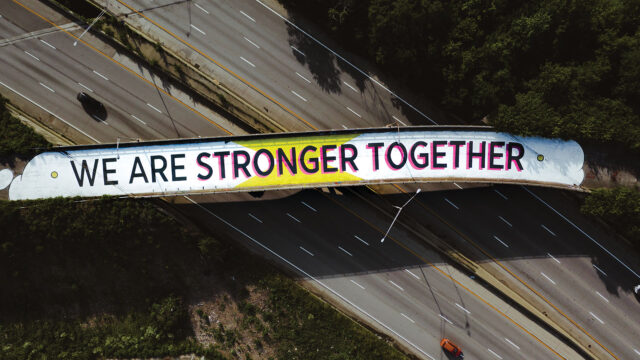Leaders said they hope pastors and seminary students now have better tools to act.
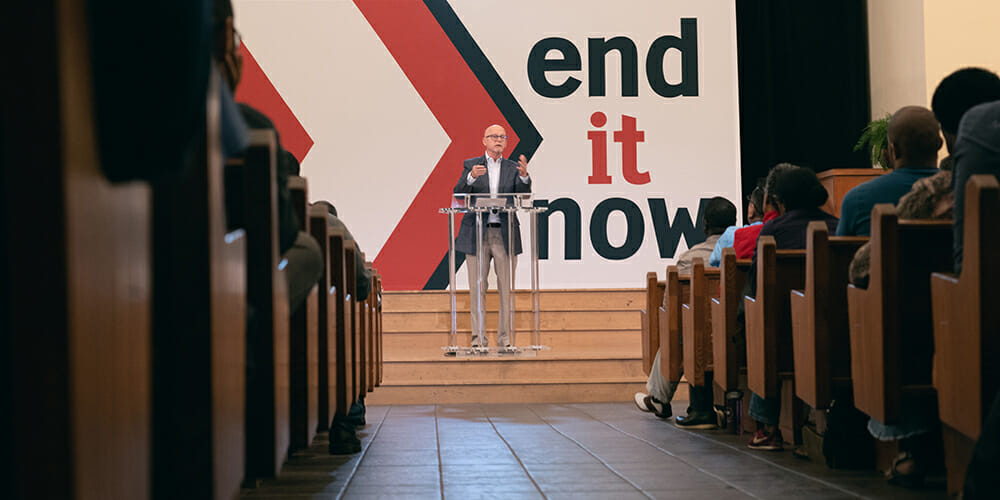
On the first day of the North American Division’s 2019 enditnow Summit on Abuse, the seminary chapel at Andrews University was full.
The two-day summit on September 4, 2019 on the Andrews campus in Berrien Springs, Michigan, United States, was organized to give pastors, seminary students, teachers, volunteers, church staff, and members the tools and knowledge to help end abuse within their scope of influence.
The summit featured a number of experts ranging from church leaders, administrators, professional advocates, and educators to women who shared their stories of abuse. The division’s third summit, the event was broadcast over two days in English and Spanish and is the first to be held on a university campus.
A Sober and Serious Subject
“This is a very sober and serious subject facing our society and our church,” said G. Alexander Bryant, North American Division (NAD) executive secretary, during an introduction to the summit. “It is my prayer that you leave this summit more equipped, informed, and motivated to address abuse in the sphere of your influence — where you work, where you socialize, and even where you worship.”
In addition to the live audience gathered both days in the chapel, according to Jamie Domm, NAD digital media strategist, more than 3,600 registered to watch the Facebook live-stream event for both days. More than 500, on average, continuously viewed the live-stream video presentations on Facebook.
Before the summit’s experts made their way to the platform, Ivan Williams, NAD Ministerial Association director, welcomed the audience, and on-site and online audiences participated in an initial survey on abuse. During both days, attorneys, pastors, Adventist Risk Management representatives, and summit presenters (after their lectures) were available to answer questions generated on Twitter and Facebook.
“Why is addressing this incumbent upon the church?” asked first presenter René Drumm, who shared the second part of Jesus’ words in John 10:10. “Living a life of abuse is not abundant living,” Drumm said. “One person is too many.”
Topics Covered
The topics covered during day one of the Summit on Abuse included “Relational Abuse and Violence in the Seventh-day Adventist Church,” by Drumm, a professor of social work; “Spiritual Abuse: Let’s End It Now,” by David Sedlacek, professor of family ministry and discipleship; “The Silent Victims of Domestic Violence,” by Ruben Muriente, outreach coordinator for the Family Justice Center (Tennessee); “Peer Abuse: Prevalence, Protection, and Prevention,” by Mindy Salyers, educator, counselor, and bullying prevention specialist; “Pornography and Violence,” by Stanley Stevenson, social services regional director, Mississippi Department of Health; “Double Abuse and Its Consequences,” by Sarah McDugal, abuse recovery coach; and “The Heart of Abuse,” with the coordinator of the Psalm 82 Initiative.
The second day’s presentations were in Spanish.
One Facebook viewer, Nicole Crosier Parker, shared her appreciation for the summit via comment: “This. Was. Amazing,” Parker wrote. “Thank you to all of these awesome presenters, and everyone else who put so much work into this! This is how change happens!”
After the live streams concluded, in another first, presenters and attendees were invited to a reception and Q&A session. There, audience members asked questions of the presenter panelists and got to hear about real-life situations and solutions in response.
Adventist Church Can Become a Leader
First presenter René Drumm, who has been doing research on domestic violence and intimate partner violence (IPV) in the church for decades, said she believes that the Adventist Church is uniquely poised to be a world leader in the area of abuse response and prevention.
“The first study in the early 2000s showed that our rates of IPV are about on par with U.S. national statistics,” Drumm said. “The second study took an in-depth look at Adventist victim/survivors of IPV, which captured my heart and energy. The pain from the survivors’ stories convinced us that the most pressing need was to train pastors to respond to disclosures of abuse. From there, the Lord opened the doors for our research team to train the pastors in our area [then the Georgia-Cumberland Conference] on abuse response. We developed a 4-hour training that the conference mandated for all of their pastors with amazing and lasting results.”
Drumm concluded, “Because a significant number of people in our church are suffering from this silent affliction, we need to act. We have the data, we know what needs to be done, and we have a proven path for improvement.”
Eradicating Abuse
Another presenter, Ruben Muriente, said he was participating in the summit because he wants to equip the Adventist Church with the best available resources and education and awareness possible to battle abuse head-on. Muriente, the outreach coordinator for the Family Justice Center in Tennessee, spoke both days of the summit, presenting in English and Spanish.
“My goal is to eradicate abuse in our church,” Muriente said. “At the summit, I will be presenting on the effects of abuse on children who witness abuse. I want the audience to understand that children need our help and support.”
Responsibility to Create Safe Churches
David Sedlacek, a professor at Andrews University, said that “as a survivor of spiritual and emotional abuse, I am convinced that the Seventh-day Adventist Church has a responsibility to create safe churches not only for our members but also for the communities surrounding us.”
Sedlacek believes that the enditnow NAD Summit on Abuse provided information, testimonials, and strategies to help deal with abuse and violence of all types. “It will help to move our church forward. It is an essential element of the healing mission of the church as we prepare for the second coming of Jesus,” he said.
Taking Abuse Seriously
“The enditnow Summit on Abuse is crucial for the Adventist Church because it is long past time for us to take the subject of abuse seriously,” Sarah McDugal said. “We carry a gospel mandate to accurately represent the loving character of God to those who are vulnerable and wounded. Properly dealing with abuse and abusers is an evangelistic imperative, because poorly handled abuse situations are one of the overwhelming contributors to young people leaving the church. How can we expect our young people to stay, when they too often see leaders misrepresent God’s character by protecting abusers and sweeping victims aside?”
McDugal said she hoped the audience leaves the summit with a healing awareness that there are people in the church who care about counteracting abuse; a sense of more freedom to speak out about the pain and find support; and a connection to practical tools to be used to increase education on abuse topics.
Putting the Topic Out in the Open
While many from the NAD administration and leadership have supported the summit in a myriad ways — from hosting to planning to presenting — two leaders gave presentations at this year’s event during the Spanish-language segment.
Gerry Lopez, associate director of NAD Children’s Ministries, said, “It is time for our church to talk and inform about these topics, to put them out there in the open. We need to educate our leaders and members and make them aware that this is a real problem that exists in our church. We have to educate everyone so that we all can know how to identify the problem and help the victims.”
Lopez presented on bullying, with the hope, he said, that viewers would gain a better understanding about not only what bullying is and how to prevent it but also how to help kids deal with it. “As pastors, Sabbath School teachers, children’s ministry leaders, school teachers, and parents, we must be the people that the victims of bullying can go to for help and protection. The only way that will happen is they can trust us enough to come to us; the only way we can help is if we are informed on what to do.”
Claudio Consuegra, NAD Family Ministries director, said after the summit, “I spoke about the relationship between pornographers and intimate partner abuse. We hope to shed some more light on the growing problem with pornography in our churches and communities.”
The original version of this story was posted on the North American Division news site.


